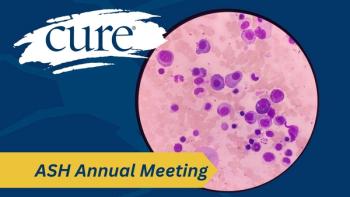
- Hematology Special Issue
- Volume 1
- Issue 1
Plotting a New Course in Multiple Myeloma
For some patients with myeloma, new targeted drugs may be an alternative to stem cell transplant.
FIVE YEARS AGO, many adults with multiple myeloma who were otherwise healthy and strong likely would have had stem cell transplants in their futures. After all, this strategy held the potential for long remissions, sometimes of 10 or even 20 years. Patients who experienced those remissions were essentially, if not actually, cured — it may still be too early to tell.
But is science telling us it’s time to trade in those risky procedures for the newer and less toxic technology of targeted drugs? For people older than 50, the answer might be “yes.” And that’s a significant statement, since the disease occurs most commonly in people over 65.
Last year, four targeted drugs were approved for the treatment of myeloma. Empliciti (elotuzumab) and Darzalex (daratumumab) were the first monoclonal antibodies approved to treat the disease. These drugs attack a protein on the surface of cancer cells, tagging the cells and making them easy for the immune system to find and kill. Ninlaro (ixazomib) is the first oral proteasome inhibitor, which blocks the activity of enzymes that would otherwise eliminate defective proteins in cells; this causes the bad proteins to build up and kill cells, mainly cancerous ones. And Farydak (panobinostat) blocks histone deacetylase, leading to the re-expression of anti-growth proteins that are typically “silenced” in cancer cells.
These targeted therapies tend to cause less severe side effects than standard chemotherapy, while stem cell transplant side effects can be quite significant, even leading to death. For instance, when donor stem cells are used in a transplant, a patient may contract potentially life-threatening graftversus- host disease.
Can patients live as long on these new drugs as they could have in the past after a stem cell transplant? Those data aren’t in yet. But the idea that patients may be able to take one of these drugs until it stops working and then switch to others as needed seems to offer a lot of promise.
Even short of long-term data, standards may be changing. In the past, any myeloma patient under age 60 and strong enough would have been a potential candidate for transplant. Now, there’s a school of thought that transplant should be considered only for those aged 50 or younger, with older patients taking targeted therapies, instead. That’s not to say that novel targeted therapies are only for those who are older — they can also add a promising new component to the treatment of younger myeloma patients. In fact, they could be used to postpone, possibly for years, the need for a transplant in such patients. It is too early to know when or if such a postponement would be the best approach.
Ten years ago, the idea that four new targeted therapies for multiple myeloma would be approved so soon, and just months apart, might have been considered a pipe dream. Now that these drugs are here, ideas are changing about which therapies can spark the longest remissions and offer the best chance for cure. The landscape may soon be similar to that in melanoma, where prognoses were markedly worse just a few years ago. With the advent of recently approved immunotherapies, the outlook for a subset of patients is much brighter.
In light of the recent advances in targeted treatment, and with more on the horizon, perhaps myeloma will follow a similar path.
DEBU TRIPATHY, MDEditor-in-ChiefProfessor of MedicineChair, Department of Breast Medical OncologyThe University of Texas MD Anderson Cancer Center
Articles in this issue
over 9 years ago
Some Pediatric Regimens Can Be Successful in Adults With ALLalmost 10 years ago
Medical Illustration: Multiple Myelomaalmost 10 years ago
Keeping Advocacy at the Forefront




